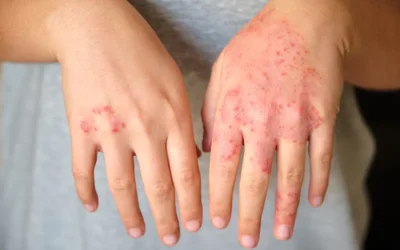As families look to enjoy a Thanksgiving dinner with their loved ones, federal health officials are calling the public’s attention to the risk of foodborne illnesses. Caused by improper food handling or poor sanitation, food-related illnesses wreak havoc on the digestive system. With the Thanksgiving holiday just around the corner, emergency physicians need to gear up to treat cases of gastrointestinal infections caused by food or beverages that contain harmful bacteria, parasites, viruses, or chemicals. Overindulgence in food and drink can also result in digestion problems and other medical conditions. Gastroenterology medical billing services are available to help physicians to manage their billing and coding tasks as they focus on their patients.
Types of Foodborne Illnesses
According to the CDC, unspecified agents account for 38.4 million episodes of foodborne illness in the U.S. each year. CDC estimates 48 million people get sick, 128,000 are hospitalized, and 3,000 die from foodborne diseases each year in the U.S.
Food-related illness is caused by a wide variety of pathogens and toxins and falls into two categories: intoxication and infection. Foodborne intoxication is caused by eating foods with a toxin that is naturally present, introduced by contamination with poisonous chemicals, or produced by bacteria or fungi growing on foods. Foodborne infection is caused by bacteria, parasites or viruses. Escherichia coli (E. coli), Salmonella, Clostridium perfringens, Norovirus and Listeria are common food-borne pathogens. Food-related infections usually take much longer to produce symptoms than toxins do. Symptoms of food-related illnesses tend to last longer than intoxication symptoms and are, in general, spread more easily.
Thanksgiving-specific Food-related Infections and Health Hazards
The foodborne infections and health conditions that can ruin Thanksgiving celebrations are as follows:
- Salmonella infection(Salmonellosis): Last year, the CDC linked a salmonella outbreak to several raw turkey products, such as turkey patties, ground turkey, and raw turkey pet food. It also affected live turkeys. Salmonellosis symptoms include diarrhea, fever, and abdominal cramps that appear 12 to 72 hours after infection and usually last four to seven days. Most people do not need medical treatment, though young children and adults older than 65 are more likely to experience severe symptoms.
- Clostridium perfringens(C. perfringens) infections: C. perfringens is a spore-forming gram-positive bacterium found in the environment as well as in the intestines of humans and animals. C. perfringens are commonly found in raw meat and poultry. The bacteria produce a toxin inside the intestine that causes illness. Beef, poultry, gravies, and dried or pre-cooked foods are common sources of C. perfringens infections. C. perfringens infection typically occurs when foods are prepared in large quantities and kept warm for a long time before serving.
- Symptoms of C. perfringens food poisoning include diarrhea and abdominal cramps that develop within 6 to 24 hours. The illness usually lasts for about 24 hours and is not passed from one person to another. Young children and elderly people are most at risk of C. perfringens infection and can experience severe symptoms that last for one to two weeks.
- Escherichia coli (E-coli) infections: This bacterium lives in the intestines of people and animals. Most E. coli are harmless but some cause brief diarrhea. However, some strains, such as E. coli O157:H7, can cause severe abdominal cramps, bloody diarrhea and vomiting. E. coli that cause diarrhea can be spread through contaminated water or food, or through contact with animals or persons. Shigella is a type of bacteria closely related to E. coli that can be found on unwashed, raw vegetables. The symptoms of E. coli infections may not appear until 10 days after the contaminated food is consumed. In 2018 alone, there were three nationwide, multi-state E. coli outbreaks. Though U.S. health officials recently disclosed another food poisoning outbreak linked to romaine lettuce, but they said it appears to be over (www.foxnews.com).
- Listeria infection: This foodborne bacterial illness usually contracted by eating improperly processed deli meats and unpasteurized milk products. Ready-to-eat food that is cooked and then refrigerated poses risk for listeria growth. Symptoms of listeria infection include, fever, muscle aches, nausea, and diarrhea. While it rarely affects healthy people, the listeria bacteria can be harmful to unborn babies, newborns, the elderly, and people with weakened immune systems.
- Norovirus infection: The norovirus is a highly contagious bacterium spread through contaminated food or water. It causes diarrhea and vomiting. According to the CDC, norovirus is responsible for 58% of foodborne illnesses in the US. It is spread by direct contact with an infected person, eating contaminated food or water, and touching contaminated surfaces and then touching the nose, mouth or eyes. Investigators looking into 18 gastrointestinal illness complaints in people who ate Thanksgiving Day dinner at a restaurant in Tennessee in 2017 found that norovirus spread throughout the restaurant could have occurred by aerosol, person-to-person, fomite, or foodborne routes (www.healthcareinamerica.com).
- Indigestion, heart problems, and high blood sugar: Indulging in too many fatty foods, carbohydrates, and sugary desserts can cause indigestion with symptoms such as abdominal pain, bloating and belching. Digestion problems can drain energy from the rest of the body, affect sleep, spike our blood sugar, and strain the heart. Science Direct reported on a study which found that eating a heavy meal increases risk of heart attack by about four times within two hours of eating. Eating too many high carb foods like those served at Thanksgiving, can cause a spike in blood sugar.
ICD-10 Codes for Foodborne Infection and Intoxication
Foodborne infections:
A02.0 – Salmonella enteritis
Salmonellosis
A02.1 – Salmonella septicaemia
A02.2 – Localized salmonella infections
A02.8 – Other specified salmonella infections
A02.9 – Salmonella infection, unspecified
A03 – Shigellosis
A03.0 – Shigellosis due to Shigella dysenteriae
Group A shigellosis [Shiga-Kruse dysentery]
A03.1 – Shigellosis due to Shigella flexneri
Group B shigellosis
A03.2 – Shigellosis due to Shigella boydii
Group C shigellosis
A03.3 – Shigellosis due to Shigella sonnei
Group D shigellosis
A03.8 – Other shigellosis
A03.9 – Shigellosis, unspecified
Bacillary dysentery NOS
A04.0 – Enteropathogenic Escherichia coli infection
A04.1 – Enterotoxigenic Escherichia coli infection
A04.2 – Enteroinvasive Escherichia coli infection
A04.3 – Enterohaemorrhagic Escherichia coli infection
A04.4 – Other intestinal Escherichia coli infections
Escherichia coli enteritis NOS
A07.1 – Giardiasis (lambliasis)
A07.2 – Cryptosporidiosis
A07.4 – Cyclosporiasis
A08 Viral and other specified intestinal infections
- A08.0 Rotaviral enteritis
- A08.11 Acute gastroenteropathy due to Norwalk agent
- A08.2 Adenoviral enteritis
A32 Listeriosis
- A32.9 Listeriosis, unspecified
Foodborne Intoxications
Diseases caused by toxin substances in foods are contained in Category A05, Other bacterial foodborne intoxications, not elsewhere classified. Examples of codes for foodborne intoxications include:
- A05.0 Foodborne staphylococcal intoxication
- A05.1 Botulism food poisoning
- A05.2 Foodborne Clostridium perfringens (Clostridium welchii) intoxication
Handling food safely can prevent foodborne infections. For safe turkey preparation, thaw, prepare, stuff and cook to the adequate temperature. The CDC offers safety instructions for handling and cooking turkey on its website.
If a person has severe symptoms from a foodborne illness, they should get medical treatment. As physicians focus on diagnosing and treating patients, they can rely on an experienced medical coding company to locate and assign the correct codes.




